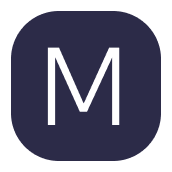INTRODUCTION
ChattyKathi: Let’s Chat!
Over three weeks our team consulted on the UX of ChattyKathi’s product.
ChattyKathi sends personally curated conversation starters on a schedule of your choice to your friends and family. Conversations happen right over SMS - so you don't even have to worry about downloading another app. Whether you connect over funny dog pictures or meditation, ChattyKathi keeps the convo flowing and makes your friendships stronger.
The Problem: Redesign the new content libraries feature. Make sure users understand its value and make it intuitive. Evaluate the entire product experience.
Team of 3: My role was UX Research and UX Design
Outcomes: Designed a content library to be: more interactive, show the relationship between parent and sub-categories, and make clear to users the impact of filter questions. Improved the onboarding process to make the technology more clear to users and cut down the amount of time it takes to sign up by 3 minutes.
DISCOVERY
Heuristic Evaluation
To evaluate the current product we conducted a heuristic evaluation to identify usability problems in the user interface design. A heuristic evaluation examines the interface by judging its compliance with recognized usability principles. The following are areas of concern:
User control and freedom
The back button becomes invisible on scroll
No filtering
Not optimized for responsiveness
Aesthetic and minimalist design
List-view takes up too much space
Comparative Analysis
In our experience with getting acquainted with ChattyKathi, it became clear to us the onboarding process was a big part of getting to the content libraries, so we wanted to look at how our competitors tackled that with an onboarding task analysis.
2 main competitors identified by our stakeholders
RESEARCH STAGE 2
Contextual Inquiry:
9 Users (2 existing & 7 new)
For contextual inquiry, we assigned users the task of signing up and starting a new chat so we could see how potential new users would interact with the current process and see what was working and what could be improved. This turned out to be very insightful as a bigger trend started to emerge from these sessions.
Here are a few pull quotes from the CONTEXTUAL INQUIRY:

“This is a lot of work.”
“I don’t understand the product on this page.”
“Lots of reading.”
“Seeing this earlier would have helped me.”
We knew we wanted to focus on the prompt libraries. However, from our contextual inquiry, we discovered that there were pain points with the onboarding process. With 9 users and lots of feedback, we wanted to validate this, so we created an affinity map. From this, onboarding was a recurring theme and became to define our challenge alongside addressing libraries. To visualize the extent of the problem to our stakeholders we decided to create a user journey.
Journey Map
This journey map is a visualization of an individual's relationships with a CK over time. This data visualization was measured over zoom during our contextual inquiry, we measured users’ body language, interactions on screen, and what they said. We input this data on the map for each screen during the onboarding process.
The journey map brought to light a downward trend, the lowest point being when users have to input contacts individually. We believe this is because users have to go between their contacts and CK and manually input contacts and they have to invite their friends to use CK before interacting with the primary feature, prompt libraries. As you can see there is a spike in positivity for libraries, users were excited by interacting with the CK libraries prompts.
Card Sorting
With research insights in hand, it was time to dive into information architecture to optimize for organization and hierarchy. Since the libraries are the soul of ChattyKathi, we started by card sorting the existing categories. The results from our card sorting were very positive, we were able to simplify the libraries from 25 parent categories to 15 parent categories.
Time To Tackle Onboarding
During the research phase when we were conducting contextual inquiries, it became clear to us that the length of the onboarding flow was hindering the value of the libraries. Once users got to the libraries they really understood the product value and were very excited about using the product. It was important to us to provide a shorter onboarding to new users while still being able to gather critical information in order to customize their prompt libraries/conversation starters.
User Flow V1
This is the first user flow we created where we reduced the number of onboarding screens by consolidating or eliminating information.
We challenged ourselves to come up with a creative solution to “adding phone numbers”, which was the biggest challenge to new users across the board. Since this is a website that functions over SMS, there are tech limitations when it comes to connecting the contact list with the product.
The idea was that instead of adding individual phone numbers manually, at the end of a chat set-up, users would be given an opt-in text to send to their friends directly through their own SMS. This “opt-in text” feature is currently being used by ChattyKathi in case folks accidentally don’t get added to a chat.
We discovered this isn’t possible at the moment. However, this tech will be a viable option as the company grows and we believe this will be a great addition down the road.
Final User Flow
We were able to simply swap out that screen for the traditional “Add #’s” screen, which you can see here.
WIREFRAMES
We Focused On Mobile First

USABILITY TESTING
If I had more time.
I want to build labeling and help text for the checkout form.
Build-out view cart functionality.
Integrate signature branding into the mock-up.
WHAT I LEARNED
Show my progress
I learned how important it is to duplicate designs so I can show how my designs evolved throughout the process.











